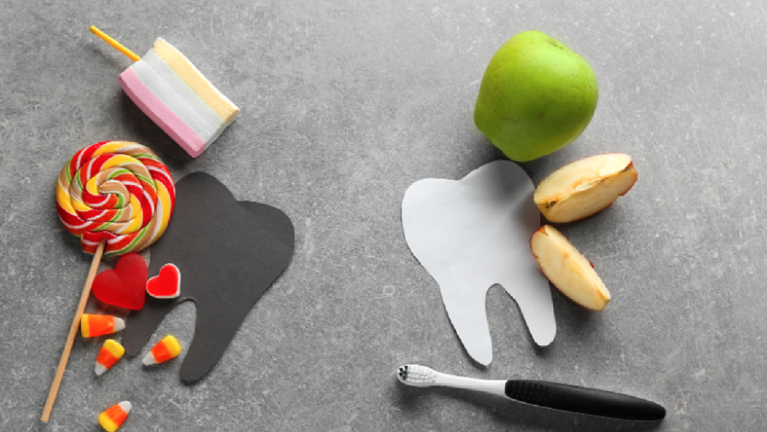
Have you ever wondered if you could eat your way to healthier gums? Although food passes through our teeth all the time, not many people think about the fact that what we eat impacts our gums as much as our teeth.
If your dentist recently suggested that you are at risk of periodontitis, you can add a few foods to your diet to keep your gums as healthy as possible. If you’re looking for an easy way to improve your dental hygiene routine, substitute sugary and acidic items for one of these snacks.
Five Foods That Prevent Gum Disease
1. Ginger
Because of its anti-inflammatory properties, ginger root has long been considered a healing herb. Ginger promotes healthy gum tissue. Try a strong ginger tea or kombucha, toss in fresh ginger to your next soup or stir fry, or make a low-sugar ginger sweet treat.
2. Apples
The saying should honestly be, “an apple a day keeps the dentist away.” Whether you prefer them sliced or whole, apples should be a staple in your diet. Eating an apple is like a luxurious spa outing for your mouth. Crunching on an apple triggers a cleaning action that helps remove the plaque that’s stuck to your teeth and gums. It can be extra beneficial to rinse with mouthwash after you finish your apple to protect your newly clean teeth from future exposure to acids.
3. Dairy
Yes, this is an excuse to eat more cheese! Dairy foods such as milk, cheese, and yogurt are full of bone-fortifying calcium for your teeth and the protein casein to reduce acid levels in the mouth. Dairy neutralizes the acids created by plaque bacteria, and it’s most effective when drank or eaten directly after a meal. Finish your breakfast with a glass of milk, your lunch with a few bites of yogurt, and your dinner with a few slices of cheese.
4. Fiber
In addition to helping with other body processes, fiber is especially great for gum health. Fiber-rich foods require more serious chewing before swallowing, leading to extra saliva production in the mouth. This excess saliva helps neutralize the plaque bacteria in your mouth. Fiber-packed foods include:
- Raw spinach
- Celery
- Cooked beans
- Almonds
- Broccoli
- Avocado
- Whole grains
- Dried fruits
- Pears
- Strawberries
- Raspberries
- Bananas
- Blueberries
- Blackberries
- Carrots
- Beets
- Artichoke
- Brussels sprouts
- Raw kale
- Lentils
- Split peas
- Chickpeas
- Oats
- Chia seeds
- Pistachios
- Fresh coconut
- Walnuts
- Sunflower seeds
- Pumpkin seeds
- Dark chocolate
Nutritionists recommend that women get 25 grams of fiber and men get 38 grams of fiber in a day for full-body health. If you struggle to get your entire fiber intake each day, you can consider getting a fiber supplement.
5. Raw Onion
While you may not want to bite into an onion like it’s an apple, raw onion has strong bacteria-fighting properties. Onions are jam-packed with antimicrobial agents that kill four bacteria strains known to cause cavities and gum disease. Slice them up and add them to your salad, sandwich, or burger. And once you finish your meal, you can brush your teeth, use mouthwash, or chew gum to bust your onion breath.
Although incorporating more of these foods into your diet will help prevent gum disease, it’s important to remember that your food choice alone will not keep periodontal disease away. You still have to maintain good oral hygiene by brushing and flossing twice a day to ensure your teeth and gums stay healthy.
If you think you may have periodontal disease, you should schedule an appointment with your dentist for a checkup. Our team at Texas Periodontal Associates would be more than happy to assist you. Give us a call at 713-457-6351 or fill out our online form to set up your appointment today.

